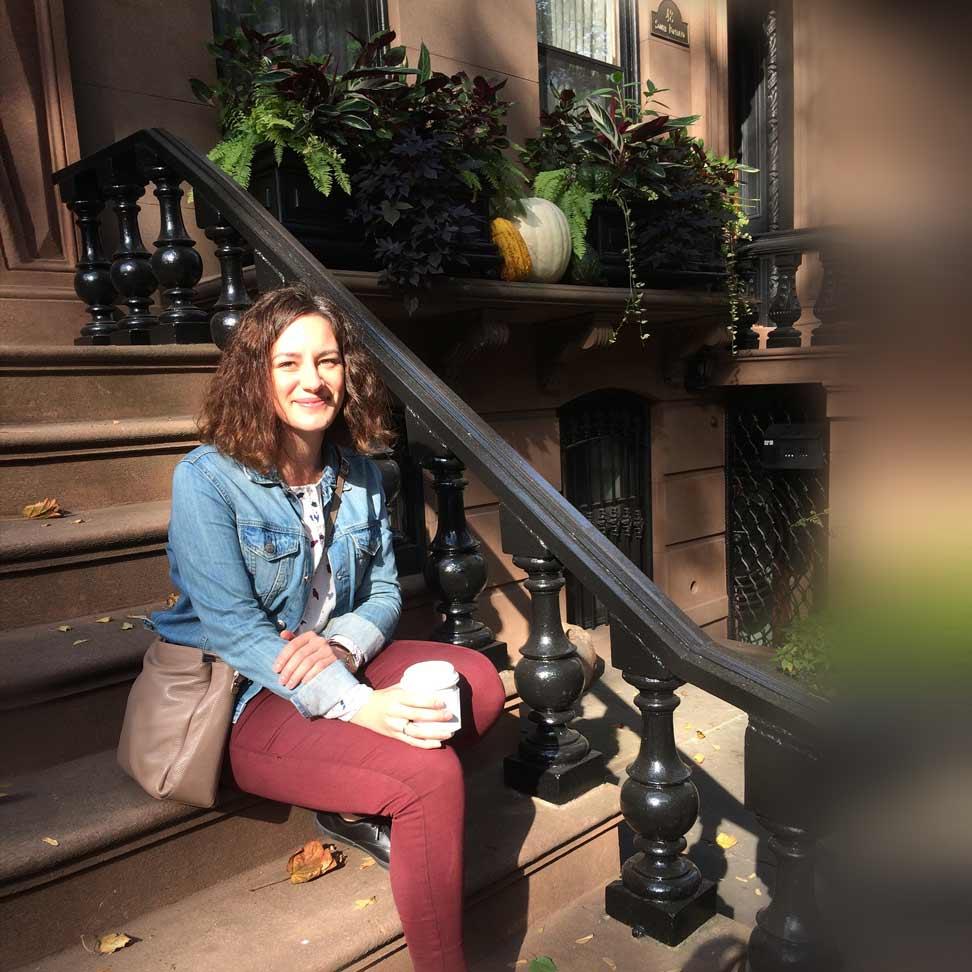Seoul holds a wealth of cultural and gastronomical gems for the avid traveler, but discovering them can be a challenge. Split right through the middle by the Han River, the city is spread far and wide, and while English is South Korea’s official second language, up-to-date information for tourists is often scarce and hard to find. Whether as a stopover or a final destination, get the most out of your trip to the capital city with our guide on what to do in Seoul, including hotel recommendations.
Getting around
Seoul boasts one of the cleanest, most affordable, and efficient public transportation systems in the world, with subways (1,350 KRW [$1]/ride) running like clockwork from 5:30am until late at night. Getting from South Korea’s main airport Incheon into the city takes less than an hour by AREX express train (8,000 KRW [$7.50]) or limousine bus (15,000 KRW [$14]), and a taxi to the city center will set you back around 60,000 KRW ($56).
Purchase and charge a T-Money card at any local convenience store for smooth boarding of all subway trains and buses throughout Seoul. The KakaoMetro app offers subway information in English. Lose an item on public transport? Call the Dasan Call Center on 120 from any local telephone (+82-120 from abroad) and an English-speaking assistant will help you.
For those averse to navigating the territories of a new public transport system, the Seoul City Tour Bus is a convenient way to view most of the city’s major landmarks and tourist spots. Buses run both north and south of the river, and all-day tickets start at just 12,000 KRW ($11).
North of the Han River
Explore traditional Korean culture in Jongro-gu
While most of ancient Seoul was destroyed during Japanese colonization and the subsequent Korean War, the Korean government has worked hard over recent years to preserve and revive what is left of the city’s traditional palaces, temples and neighborhoods. Nowhere is this effort more visible than in the city’s Jongro-gu district, located north of the Han River. Here, traditional architecture and skyscrapers sit side-by-side, with multi-lane roads traversed by tiny, old backstreets – creating an atmosphere unlike anywhere else in the world.
In the heart of Jongro-gu lies Gyeongbokgung. Looming majestically over the modern Gwanghwamun Plaza, and with Bukhansan Mountain to the rear, Gyeongbokgung is by far the most iconic of Seoul’s five ancient palaces. Open Wednesday to Monday, entrance to the palace costs 3,000 KRW ($3) for adults, and opening times vary slightly season to season. Travelers staying for longer periods may purchase an integrated ticket allowing access to four of Seoul’s palaces plus Jongmyo Shrine (10,000 KRW [$9]).
Directly to the east of Gyeongbokgung is the quaint district of Samcheong-dong, home to Korea’s Presidential residency, the Blue House. Samcheong-dong’s array of cafes, boutique stores and the nearby National Museum of Contemporary and Modern Art (MMCA) make it a pleasant place to while away an afternoon. An all-access ticket to the MMCA costs just 4,000 KRW ($4), and exhibitions change seasonally. Admission to the MMCA is free on the last Wednesday of every month.
A stroll up the hill through Samcheong-dong leads to the famous Bukchon Hanok Village; a collection of well-preserved traditional Korean hanok houses, some of which are lived-in to this day. For those wanting a hanok experience of their own, book an overnight stay in one of these beautiful, wood and brick buildings.
Book a room at Dalzip
For traditional souvenir shopping in Jongro-gu, Insadong is a must-visit. Take exit six of Anguk Station, wander around the dazzling Ssamzigil Market, and finish up with a stunning traditional hansik set meal centred around rice and served alongside a bowl of soup and a variety of side dishes at Insadong Chon. For vegetarians, Sanchon offers beautifully plated traditional Korean Buddhist temple cuisine and free, nightly Korean folk music and dancing.
Alternatively, Tosokchon to the west of the nearby Gyeongbokggung Palace is one of the oldest establishments in the city to serve traditional Korean chicken soup, or samgyetang. The one-dish menu and long lines at dinner time are a testament to the quality of this delicious dish.
For those who like to explore a city on foot, the Cheonggyecheon Stream – built in 2005 as part of the city’s mission to incorporate more pedestrian spaces into its design – offers a great walking route through the Jongro-gu district. At the very eastern end of the stream lies the Dongdaemun Design Plaza, an impressive, edge-less art space designed by Zaha Hadid and opened in 2014. Walk a short way along the stream and you will come to Gwangjang Market – a fantastic, undercover market jam-packed with stalls selling local wares and traditional street food.
For some quiet respite from Jongro-gu’s hustle and bustle, relax in the somewhat-hidden Ikseondong – a collection of restored hanok houses in Jongro-gu where you’ll find quiet bars, coffee shops and boutique stores such as Vintage Bonnie.
Shopping and skylines in Myeongdong
Outside of Jongro-gu, but still north of the river, lies Myeongdong – Seoul’s mecca for mainstream clothes and cosmetics shopping. While only recently making waves internationally, South Korean cosmetics have long been coveted by make-up enthusiasts in Asia, and nowhere on the peninsula has a higher concentration of cosmetics stores than this neighborhood. Korean cosmetic brands tend to have their own dedicated stores and Myeongdong’s main street is lined with shops from the major big brands, like The Face Shop, Skinfood, Innisfree and Etude House.
To relax after a hard afternoon shopping, head to the nearby N Seoul Tower for unbeatable views of the city. Enjoy a 30-minute walk up the mountain or take the cable car. For visitors who intend to shop till they drop, the Lotte Hotel L7 Myeongdong is a convenient and affordable choice for accommodation nearby.
A taste of Korean nightlife
To the west of Myeongdong lies Hongdae; home to Hongik Art University, and arguably Seoul’s main student neighborhood. Hongdae is the place to be for budget shopping, night entertainment and a taste of life on the weekends for Korea’s youth. Streets lined with snack stalls, buskers and university dance troupes make the stroll from Hongik University subway station up towards the campus a vibrant affair.
Start your evening like a local, with some chimaek (chicken and beer) and head over to one of the area’s massive karaoke establishments. At Luxury Su Noraebang (meaning ‘singing room’), a private room and a discography of classics to sing along to costs about 2,000 KRW ($2) per person, per hour, with drinks and snacks extra.
For a similarly local experience, check out one of the neighborhood’s renowned, quirky animal cafes. Choose from puppies, cats, sheep, and raccoons to hang out with while sipping on your coffee.
South of the Han River
Upscale modernity and family fun in Jamsil and Gangnam
A relative wasteland just thirty years ago, Seoul’s Gangnam district is now the city’s business and plastic surgery hub, and a trendy locale for young professionals looking for a drink or bite to eat. While not necessarily known for its cultural delights, Gangnam is still worth a visit to experience a more cosmopolitan side to Seoul.
Completed in early 2017, the Lotte World Tower boasts the 3rd highest observatory in the world, and while a ticket to the 123rd floor will set you back 30,000 KRW ($28), the views of the city are worth it, and the glass-floored 1,640-foot drop is guaranteed to make any vertigo-sufferer’s head spin.
Families visiting with children – or those who wish to indulge their inner big-kid – may enjoy a day spent at Lotte World Adventure, Korea’s albeit modest answer to Disneyworld. Make sure to stay for the daily 8 o’clock performance parade, which includes dancers, light-shows and indoor fireworks. Also on-site is an aquarium, ice-rink, and teamLab World (tickets sold separately).
For those hoping to spend some time in Seoul’s great outdoors, the city’s extensive bicycle paths offer a great opportunity to see the city on two wheels. Hire a bicycle at Jamwon Hangang Park in Gangnam and spend an afternoon cycling along the riverfront.
Luxury eateries in Apgujeong
For foodies and fine-dining enthusiasts, Apgujeong in Gangnam is a must-visit. The location of ‘K-Star Road’ – site of several major K-Pop entertainment agency headquarters – Apgujeong has also become somewhat of the center the city’s high-end restaurant scene. The Michelin-starred modern-Korean eatery, Jungsik, and acclaimed Soigné are both located here. Ryunique – which offers a 23-course dinner menu for 230,000 KRW ($215) – is also nearby, next to shopping street Garosugil.
For a refined yet traditional Korean dining experience, try Gangnam’s Daedo Sikdang – a cook-it-yourself Korean barbecue restaurant serving only the highest-quality Korean hanu beef.
Tired from the trip? Treat yourself to a luxury spa experience, by the masters of Korean skincare, Sulwhasoo, located in Apgujeong. Business travelers or those wanting accommodation away from the ‘touristic’ areas of the city may want to check out the new Le Meridien or recently renovated Glad Live, both in Gangnam.
Looking for more city breaks?
- explore Tokyo – the capital of cool
- city breaks galore – discover the best European city breaks for this year
- eat your way around the world in Toronto


